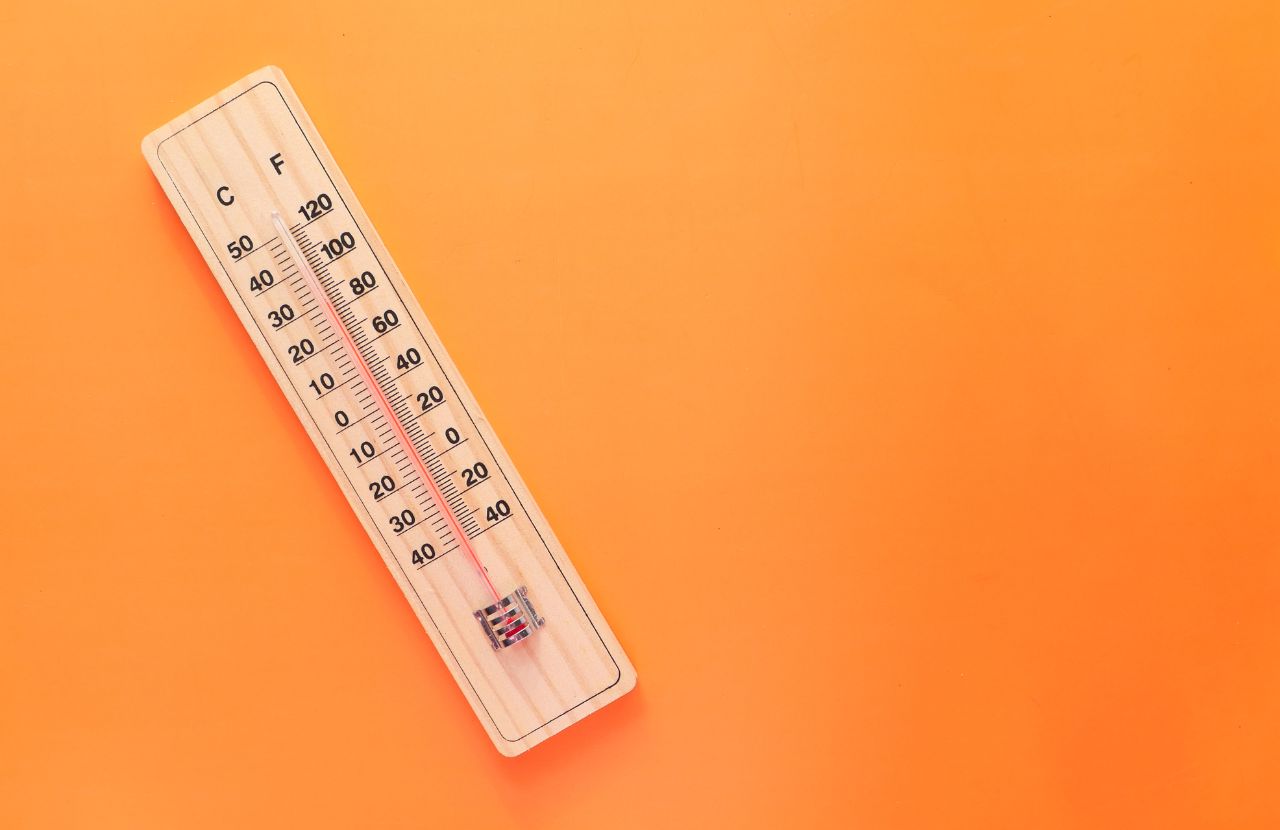
Working in excessive heat or cold temperatures can make employees physically uncomfortable, resulting in a drop in productivity, lower workplace morale, and invoking a range of health issues. But what is the maximum – and minimum – legal working temperature in the UK?
With the weather becoming increasingly extreme, here we discuss what all employers need to know.
Is there a legal maximum (and minimum) working temperature in the UK?
The Workplace Health and Safety Welfare Regulations 1992 do not specify a maximum or minimum working temperature figure. However, the Approved Code of Practice associated with the Workplace (Health, Safety and Welfare) Regulations suggests an indoor working space should not go below 160C (or 130C if the work involves a lot of rigorous physical effort).
The law is clear that employers have a duty of care towards their employees, so although this is ‘suggested’ guidance, it is strongly advisable that employers follow it.
Although there is no legal maximum temperature in the UK, The Workplace Health, Safety and Welfare Regulations 1992 state that it is an employer’s responsibility to keep the indoor temperature of their premises ‘reasonable’ for employees.
Regulation 7 states:
(1) During working hours, the temperature in all workplaces inside buildings shall be reasonable.
(3) A sufficient number of thermometers shall be provided to enable persons at work to determine the temperature in any workplace inside a building.
What is considered a ‘reasonable’ temperature?
Since different buildings and industries have unique temperature needs, there is no one-size-fits-all temperature guide for employers to follow.
Therefore, to comply with the Workplace Health, Safety and Welfare Regulations 1992, employers must thoroughly assess working conditions and establish a ‘reasonable’ working temperature that doesn’t threaten the health, safety and well–being of their employees.
The Health and Safety Executive (HSE) provide guidance on how to determine workers’ thermal comfort, which includes a checklist of environmental factors. Most importantly, they say:
“A simple way of estimating the level of thermal comfort in your workplace is to ask your workers or their safety representatives (such as unions or employee associations) if they are satisfied with the thermal environment.”
As a matter of interest, the TUC have long campaigned for a maximum working temperature of 240C to be set by law. When the temperature goes above this limit, they want employers to have a legal duty to put measures in place to reduce the temperature and make the environment more comfortable.
What temperature is too hot to work?
Knowing how hot is too hot to work is complex since what is acceptable depends on a range of factors including individual health, the level of activity required, and specific work environments. For example, a warehouse where workers are engaged in manual handling activities will perhaps need to be kept cooler than a well-ventilated office where employees are typically sedentary.
Although the temperature is subject to various conditions, temperatures exceeding 32°C are dangerous, especially if employees are physically active.
Working in excessively hot conditions poses many severe health risks, such as:
- Dehydration, which can happen through excessive fluid loss. Symptoms include dry mouth, increased thirst, and difficulty urinating.
- Heat cramps, which can cause workers muscle pain due to contractions that sometimes occur during or after intense physical activity, such as outdoor construction work on a hot day.
- Heat rash, often called prickly heat, which can be uncomfortable and occurs after profuse sweating. It presents itself as itchy, red bumps on the skin.
- Heat exhaustion, which reveals itself through profuse sweating, fatigue, dizziness, headaches, nausea, and fainting.
- Hyperthermia or heat stroke, which can be life-threatening. This happens when the body’s temperature regulation mechanisms fail, resulting in a dangerously high body temperature, seizures, hot and dry skin, rapid heartbeat, and loss of consciousness.
In the UK, health risks associated with high temperatures often occur during warm weather and heatwaves, particularly affecting those working for prolonged hours.
If employees mainly work outdoors, such as construction workers, holiday and tourism guides, sporting instructors and hospitality workers, employers must put specific arrangements in place and provide facilities to keep them comfortable throughout the working day.
What is a ‘reasonable’ minimum temperature for work?
As we discussed above, the Approved Code of Practice associated to the Workplace (Health, Safety and Welfare) Regulations suggest an indoor working space should not go below 160C (or 130C if employees are engaged in physically active tasks).
Prolonged exposure to lower temperatures can increase the risk of:
- Musculoskeletal injuries. This is a set of conditions that affects the muscles, tendons, ligaments, joints and spine.
- Respiratory problems, which cause a range of symptoms, from trouble breathing to persistent cough and chest pains.
- Frostbite. Signs of frostbite are numbness, blisters and hardening on the skin.
- Swollen, numb and painful feet. This can happen in low temperatures, especially in wet conditions.
- Hypothermia. This can occur in extremely low temperatures and may lead to a medical emergency.
Employees who work outdoors or in colder environments, such as cold stores, chillers, emergency service teams, construction workers, or agricultural workers must have a risk assessment undertaken and must be provided with safe systems of work, equipment, clothing and training to understand how to care for themselves in cold conditions and the symptoms of cold-related health conditions.
The HSE provides specific guidance for outdoor working to support employers.

How do high working temperatures affect productivity?
We all know that we feel more fatigued and less motivated to work when temperatures are uncomfortably high, but to what extent does it affect our productivity, health and wellbeing?
Research, led by Professor George Havenith, Director of Environmental Ergonomics Research Centre (EERC) at Loughborough University has answered that question. The scientists found that workers’ productivity decreased by 35% when temperatures exceeded 350C with 50% relative humidity. Productivity reduced by a staggering 76% when temperatures reached 400C with 70% relative humidity.
Can a risk assessment help employers to manage extreme temperatures?
A risk assessment helps employers to identify and mitigate the potential hazards associated with extreme heat and cold. A risk assessment can be undertaken in anticipation of exposure and generically covers workers in differing occupations. However, it is important to keep a check on weather fluctuations throughout the year by monitoring weather forecasts and foreseeing changes in work patterns, so that effective precautions and reviews of risk assessments can be made proactively at any time.
The risk assessment should involve:
- Identifying potential thermal hazards. This could include extreme weather events, inadequate ventilation, exposure to direct sunlight, or inadequate heating/cooling systems.
- Determining potential risks. Assess the risks associated with each hazardous activity or environment. For instance, excessive heat can lead to stress, heat stroke, and fatigue, while cold environments can cause musculoskeletal injuries and other conditions.
- Evaluating existing controls. Review the measures that are already in place to address thermal comfort. This might include heating and cooling systems, ventilation, and use of personal protective equipment (PPE).
- Assessing employee vulnerability. Consider the demographics of your workforce. Factors like age, medical conditions and clothing worn can determine an employee’s sensitivity to temperature.
- Gathering information. Collect data on temperature and humidity levels in different areas of the workplace. This could involve monitoring equipment, surveys, and interviews with employees.
What practical measures can employers take to ensure comfortable working temperatures?
Following the risk assessment, employers will need to identify appropriate actions to mitigate the risks identified. This might involve adjusting temperature settings, investing in heating/cooling equipment, improving ventilation, providing work clothing, establishing policies for appropriate work clothing, implementing more rest breaks, changing working patterns to avoid exposure to extreme temperatures or moving workstations.
Here are some practical measures that might be put in place to safeguard employees in different working environments.
Please note that in all working environments, employees must have easy and quick access to drinking water.
Offices
In office environments, blinds can shade employees from direct sunlight. Also, workstations can be positioned so they are away from heat sources.
To protect employees from cold, ensure all draughts are covered, and efficient heating systems are set up to make sure workers are warm as soon as they arrive.
Warehouses, freezer storage areas, factories, and outdoor environments
For employees who work in warehouses, freezer storage areas, factories or outdoor environments, employers may need to provide personal protective equipment (PPE) to ensure their safety and comfort, such as thermal clothing to retain body heat. Employees who work outdoors, such as road workers, need well-insulated and waterproof footwear and have refuges. Change work patterns to avoid extremes e.g. start earlier in the day and avoid midday working.
Protection from extreme cold
For those employees who work long hours in extremely cold conditions such as in cold stores or chillers, particular measures should be put in place. For example, ensuring that they are provided with suitable PPE to combat cold weather. This may include insulated clothing, gloves, hats and footwear. Layering is key, as it helps trap warm air close to the body. Waterproof and wind-resistant outer layers can also prevent moisture and cold air from penetrating.
The HSE provides guidance for protecting employees who work in cold environments.
Protection from extreme heat
If employees are working in very hot conditions, employers must try to limit the time they spend working in midday heat by adjusting schedules and allowing for a reduced working pace.
Employees should be provided with refuges, hats that afford protection, light and comfortable clothing in warmer temperatures that safely comply with the nature of their tasks and sun protection of at least SPF15. Please see HSE guidance for further information.
Further guidance on creating a safer working environment
The Praxis42 IOSH Managing Safely course provides managers, supervisors and team leaders with comprehensive, practical knowledge of health and safety in the workplace.
Learners will gain an understanding of how to look after employees’ physical and mental wellbeing in the context of health and safety management. This includes how to undertake risk assessments, identify hazards and mitigate or control risks, such as those related to legal working temperatures in the UK.
Safeguarding employees not only helps ensure compliance with the law but also leads to improved morale, higher productivity, and fewer sick days and workplace injuries.

Adam Clarke
Managing Director (Consulting)
